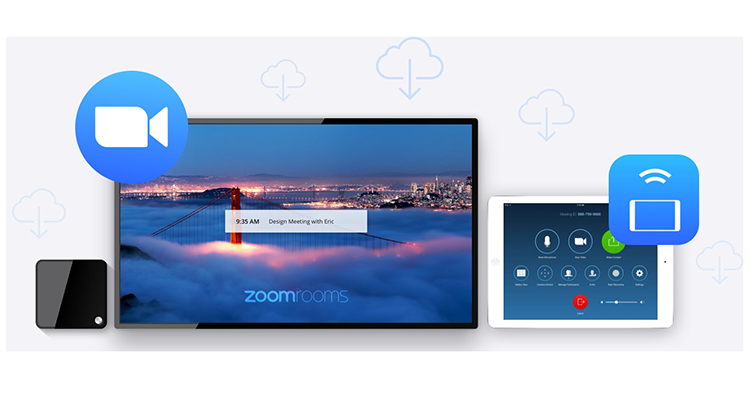Year in Review

While it may have been a quiet last few months of the year for me as I settle in to my new position back in the integration side of the business, you should know that your pixel-and-inkstained wretch is alive and well. It’s been another interesting year in the AV industry, with quite a bit at which we can look forward. Following are my thoughts about last year and the years to come.
2016 Was the Year that…
…Some manufacturers started to put it all together.
I’ve spoken about the move from “best in breed” to single ecosystems. At the time, several manufacturers were on the way to offering a complete ecosystem, but none were quite there yet:
- Crestron offered control and video distribution, but not audio.
- Biamp offered audio and control, but no video.
- Harman offered control, audio, and video through their AMX and BSS Soundweb lines, but these were not integrated in a meaningful way.
- QSC offered audio and control, but not video.
Since then, Crestron has taken the clear lead with the introduction of the Avia line of digital audio processors. It is now not only possible to design an entire system with Crestron, from video inputs (including wireless video and tabletop interfaces) all the way to loudspeakers. The only thing Crestron does not offer are video displays and equipment racks. I’ve yet to get my hands on the new DSPs, but in terms of published specifications, cost, and capabilities they are in line with competing products from more traditional audio manufacturers. While they still don’t have the large-scale central-location types of products akin to Biamp’s Tesira servers or QSC’s enterprise cores, they are one hundred percent worth considering for single-room applications.
QSC took a step in adding a streaming PTZ conferencing camera as the first video endpoint to its network-audio based QSYS system. While this is an intriguing step, they’re still well short of boasting anything near to a complete video distribution system. That said, they offer nice control options, including a wall- or table-top mounted 7” touchpanel. With a few new products, we could be seeing the potential of a complete QSC system within the next year.
Biamp is, perhaps, the runner up to Crestron. They lead up to InfoComm with what I found to be an irritatingly clever “augmented reality game” teasing something called “Tesira Lux.” As we all know by now, this is the long-awaited addition of video to Biamp’s existing audio platform. This may be a case in which being a late arrival at the video-party is an advantage in that Biamp, lacking the investment in an HDBaseT product line, could skip straight to IP distribution. A unified AVB infrastructure for both audio and video both simplifies network design and mitigates network-based sync concerns. Tesira Lux still does not appear to be shipping, however, and we’re short a handful of details as to how it will work.
I’ve been critical in the past of Biamp’s reliance on AVB, especially given that the largest manufacturer of enterprise network switches hasn’t supported it. This leads to another point…
…That Cisco announced official support for AVB.
We all knew for a long time that the technical potential was there and that Cisco was part of the Avnu alliance. This year we’ve seen white-papers from Cisco on AVB as well as announcements that the AVB suite of protocols will be supported on the Catalyst series of network switches.
Does this mean that AVB has a chance of catching up to Dante in the digital audio format war? I’m not yet certain; there are still many, many more Dante-enabled products than AVB products, and the fact that Cisco switches can support AVB doesn’t mean that IT administrators will support AVB on their enterprise networks. Still, this is an interesting step and, perhaps, vindication for Biamp’s choice to choose AVB over Dante for their backbone. We shall see.
…Acquisitions keep happening. And we learn – again – what AMX is worth.
The big acquisition last year was Harman’s purchase of AMX for what then seemed like a paltry 365 million dollars. For contrast, Google purchased Nest – a company which only made one product – for nearly thrice that amount. This year AMX remained on the move as Harman itself was purchased by Samsung for eight billion dollars. What’s interesting about this news is how it was framed in nearly all media – including Samsung’s own press releases. The emphasis was entirely on connected automotive solutions and the Harman brand. Samsung did include the audio and professional categories in their press releases, as follows:
Audio: HARMAN’s leading brands and cutting-edge audio systems include JBL®, Harman Kardon®, Mark Levinson®, AKG®, Lexicon®, Infinity®, and Revel®. The company also licenses Bowers & Wilkins® and Bang & Olufsen® brands for automotive. All of these brands will greatly enhance the competitiveness of Samsung’s mobile, display, virtual reality and wearable products to deliver a fully differentiated audio and visual experience for customers.
Professional: The combination will also expand the combined company’s business-to-business platform through its ability to deliver integrated, large-scale audio and visual professional solutions at stadiums, concert facilities and other performance centers such as The John F. Kennedy Center for the Performing Arts and STAPLES Center – home of the GRAMMY Awards®.
As Gary Kayye pointed out in these very pages, while the announcement does mention the JBL and AKG brands, there is no mention anywhere of our friends at AMX. In fact, nearly the only people mentioning AMX at all are AV industry bloggers and professionals. Does this mean that we in this industry are an afterthought, or does it more specifically mean that AMX is, despite a broad and capable product line, a fringe player? Time will tell.
….the Pixel and Ink-Stained Wretch moved on.
Finally, on a personal note, this is the year that I left the AV consulting world to return to the integration side of the business. This wasn’t an easy choice for me to make, and I will dearly miss my friends at Shen, Milsom and Wilke who just celebrated their thirtieth year in business. It was a tough note on which to leave, but I DO have roots in integration and have in the past had great experiences working with the Whitlock team of which I’m now a member. It’s also a change which allowed me to give up the long commute and have much more time at home with my family.
Don’t worry, I’m still here and you’ll still be hearing from me – I promise. In fact, I just may have a surprise or two in store for the next year. So stay tuned, and a joyous holiday and New Year to all of you out there in AV-land.





